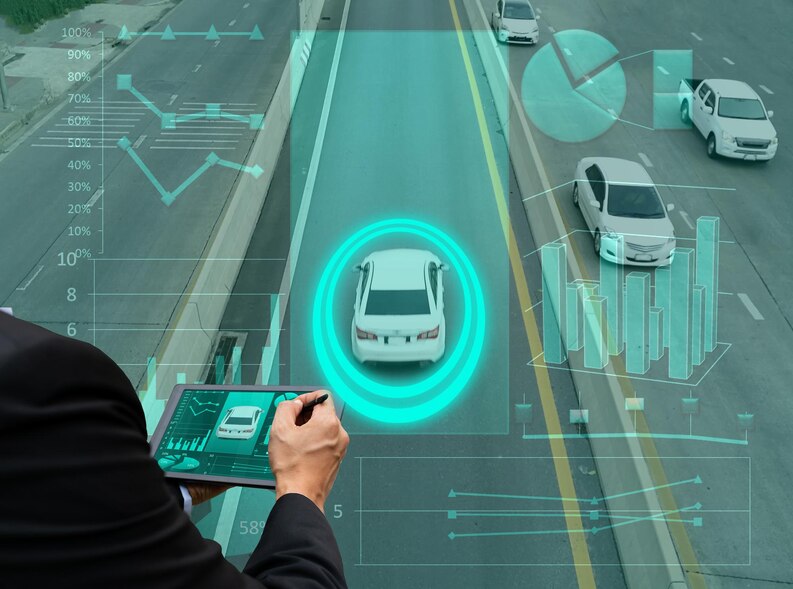In an era where precision and autonomy define technological innovation, laser-guided navigation has emerged as a cornerstone in both industrial and consumer-level systems. Whether it’s used in autonomous vehicles, robotics, or everyday navigation apps, laser-based guidance technology enables machines and humans alike to navigate complex environments with high accuracy.
By converting light into spatial data, laser navigation systems can determine distances, detect obstacles, and construct real-time maps. These capabilities have become critical not only for robots in manufacturing facilities but also for vehicles, drones, and handheld devices that must interpret and respond to the world around them. As industries push the boundaries of automation and mobility, understanding how laser-guided navigation works and how it compares to other positioning systems becomes more important than ever.
Navigation Apps with Lane Guidance
Most people are familiar with GPS navigation, but newer navigation apps now incorporate lane guidance a feature designed to help drivers select the correct lane for an upcoming turn, exit, or interchange. This is especially useful in busy urban environments or multilane highways where last-second changes can be dangerous.
Lane guidance uses a combination of GPS data, real-time traffic input, and high-definition map data to anticipate lane changes. Some apps go further by integrating visual and auditory alerts and providing 3D models of intersections, creating a more intuitive driving experience.
While lane guidance doesn’t rely on laser technology directly, it exemplifies how sensor-driven, real-time navigation systems are becoming essential in both personal and professional settings. The demand for similar, but much more precise, systems in industrial automation and autonomous robotics continues to grow where navigating tight aisles, adjusting for dynamic layouts, or aligning with precise paths can’t rely on GPS alone.
Laser Navigation System
A laser navigation system uses lasers typically LiDAR (Light Detection and Ranging) to scan an environment and generate a real-time map. By emitting rapid laser pulses and measuring how long it takes for the light to reflect back, these systems calculate distances with extreme accuracy. This allows for highly detailed 3D environmental modeling.
These systems are widely used in autonomous mobile robots (AMRs), drones, self-driving vehicles, and even agricultural machines. One of the key advantages is their ability to function in environments where GPS signals are weak or nonexistent, such as indoor facilities, underground tunnels, or large warehouses.
Laser navigation is not just about movement it’s about intelligent positioning. In manufacturing, for example, these systems help robots maintain orientation while transporting heavy objects. In logistics, they guide fleets through constantly changing layouts. As industries prioritize flexibility, safety, and autonomous operation, laser navigation offers the reliability and spatial awareness required to execute tasks with confidence and precision.
An Optical Navigation System
Optical navigation systems go beyond laser pulses, using cameras and visual sensors to track position and movement. These systems often rely on pattern recognition, edge detection, and depth perception to interpret surroundings.
In applications like drones or handheld devices, optical systems can be incredibly efficient especially in well-lit environments with distinguishable features. In industrial automation, they are frequently paired with laser-based systems to create a hybrid solution that combines the depth accuracy of lasers with the pattern recognition of cameras.
One of the advantages of optical systems is their ability to capture a wider variety of information such as textures, colors, or visual cues making them ideal for tasks like inventory scanning, object recognition, or surface inspection. However, they are more sensitive to lighting conditions and may be less effective in dark, dusty, or reflective environments unless properly calibrated.
The growing use of sensor fusion, combining optical data with LiDAR or inertial measurement systems, enhances the robustness of navigation systems, especially in dynamic environments requiring real-time decision-making.
Laser Scanner vs. Laser Tracker
Though they may sound similar, laser scanners and laser trackers serve different purposes in navigation and positioning systems:
Laser Scanner
A laser scanner emits light over a wide area to create a detailed spatial map. Common in LiDAR-based systems, scanners rapidly rotate or sweep their beam across surroundings to build a 2D or 3D image. These are used for environmental mapping, obstacle detection, and path planning, especially in autonomous robots or vehicles.
Laser Tracker
A laser tracker, by contrast, is a precision measurement tool. It focuses on a specific target (often a reflector) and continuously tracks its position in space, offering pinpoint accuracy over long distances. This is commonly used in robot calibration, machinery alignment, and aerospace manufacturing, where even sub-millimeter deviations can have major consequences.
While both are essential, their use cases differ. Scanners offer broader spatial awareness, ideal for navigation, while trackers specialize in high-precision measurement and control. In high-end automation systems, these tools may even be used together—scanners to map the environment, and trackers to refine the robot’s position during complex tasks.
Conclusion
Laser-guided navigation is a transformative technology reshaping how machines interact with space. From GPS-enhanced navigation apps with lane guidance to sophisticated LiDAR and optical systems used in autonomous robotics, laser-based navigation offers unmatched accuracy, safety, and control.
As industries advance toward full automation, understanding the strengths and applications of various laser navigation tools—scanners, trackers, and optical sensors will be essential for designing systems that are not only functional but exceptionally efficient. In every corner of modern mobility, laser guidance is proving itself to be the light that leads innovation forward.


